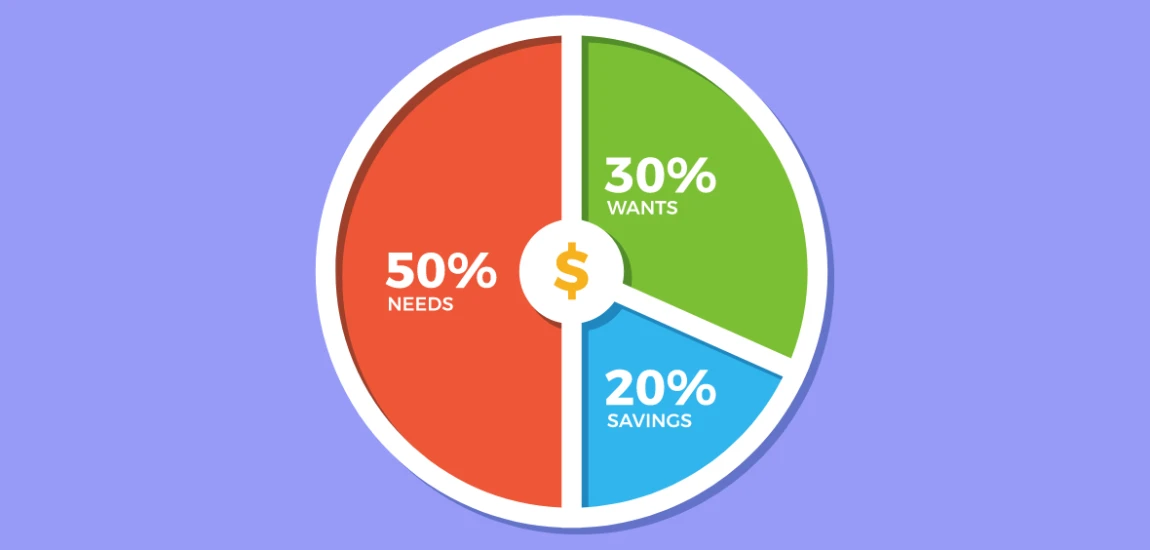The 50/30/20 Rule Explained: A Beginner’s Guide to Budgeting

If you want to take control of your finances but find traditional budgeting methods overwhelming or too complex, the 50/30/20 rule may be the perfect starting point. This straightforward and easy-to-follow approach to budgeting has become one of the most popular frameworks among financial experts and beginners alike. Whether you are trying to save for an emergency fund, pay off debt, or simply spend more wisely, the 50/30/20 rule provides a clear path forward without requiring advanced financial knowledge.
In this guide, we will break down exactly what the 50/30/20 rule is, how it works, why it is effective, and how you can apply it to your own life for lasting financial stability.
What Is the 50/30/20 Rule?

The 50/30/20 rule is a budgeting method that divides your after-tax income into three primary spending categories:
-
50 percent for needs
-
30 percent for wants
-
20 percent for savings and debt repayment
This method was popularized by U.S. Senator Elizabeth Warren in her book "All Your Worth: The Ultimate Lifetime Money Plan." Its main advantage lies in its simplicity, allowing individuals to quickly understand and apply it to their personal finances.
Unlike complicated budgeting systems that require tracking every expense down to the penny, the 50/30/20 rule offers a broad yet effective way to manage your money responsibly. It encourages balanced spending while also prioritizing long-term financial goals.
The 30 Percent: Wants
The second category allocates 30 percent of your income to discretionary spending, often referred to as "wants." These are non-essential expenses that enhance your lifestyle and bring enjoyment but are not critical to your survival or basic functioning.
Examples of wants:
-
Dining out and takeout meals
-
Subscriptions (streaming services, magazines)
-
Hobbies and entertainment (movies, concerts, video games)
-
Shopping for clothing and accessories beyond basic needs
-
Vacations and travel
-
Gym memberships or fitness classes
Wants are important because they allow for a balanced lifestyle. Completely eliminating them can lead to burnout and dissatisfaction. However, managing this 30 percent category carefully ensures you enjoy life while still maintaining financial responsibility. Tracking your spending habits can help identify areas where you may be overspending and make adjus
The 20 Percent: Savings and Debt Repayment
The final 20 percent of your income should be directed toward building your financial future. This includes contributions to savings, investments, and extra debt repayments beyond the minimum.
Examples of savings and financial goals:
-
Emergency fund contributions
-
Retirement savings (e.g., RRSPs, 401(k)s, IRAs)
-
Extra credit card or student loan payments
-
Investment accounts (stocks, mutual funds, ETFs)
-
Saving for a home, car, or education
Establishing an emergency fund should be the first priority in this category. Aim for at least three to six months' worth of living expenses. Once that goal is achieved, focus on paying off high-interest debt and contributing to long-term savings and retirement plans. The earlier you start, the more your money can grow through compound interest.
Real-Life Example of the 50/30/20 Rule
Let us assume your monthly after-tax income is $3,000. Here is how the 50/30/20 rule would break down:
-
50% Needs: $1,500 (rent, groceries, bills, transportation)
-
30% Wants: $900 (entertainment, dining out, subscriptions)
-
20% Savings and Debt Repayment: $600 (emergency fund, credit card payments, investments)
This straightforward structure makes it easy to evaluate any financial decision. If you are considering a new expense, ask yourself which category it falls under and whether it fits within your current budget.
Why the 50/30/20 Rule Works
-
Simplicity: The rule is easy to understand and apply, making it ideal for those new to budgeting.
-
Flexibility: It adapts to different income levels and financial goals.
-
Balance: It promotes healthy financial habits while allowing for personal enjoyment.
-
Foundation for Growth: It encourages consistent saving and debt reduction.
Rather than imposing strict limits or unrealistic expectations, the 50/30/20 rule provides a sustainable way to live within your means while planning for the future. It eliminates the need for detailed spreadsheets and constant monitoring, which is often where traditional budgets fail.
While the 50/30/20 rule is a helpful guideline, it is not a one-size-fits-all solution. Life circumstances, income variability, and personal goals may require you to tweak the percentages. For example, if you are aggressively saving for a house or trying to pay down debt faster, you may adopt a 40/30/30 or 50/20/30 split. The key is to use the rule as a foundation and build on it according to your unique financial situation.
The 50/30/20 rule is a powerful yet simple tool for taking control of your finances. It creates structure without being restrictive, offering a balanced approach that includes essentials, lifestyle, and long-term goals. Whether you are just starting out or looking for a better way to manage your income, this budgeting rule can provide clarity and direction.
By understanding your spending, setting clear priorities, and staying consistent, you can build a strong financial future without sacrificing the things you enjoy. Use this guide as your starting point and take your first step toward financial freedom.




